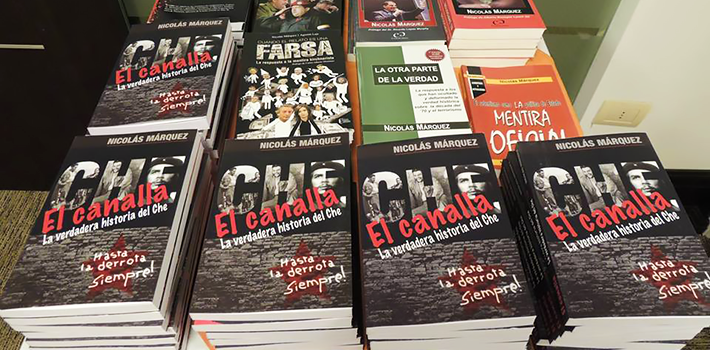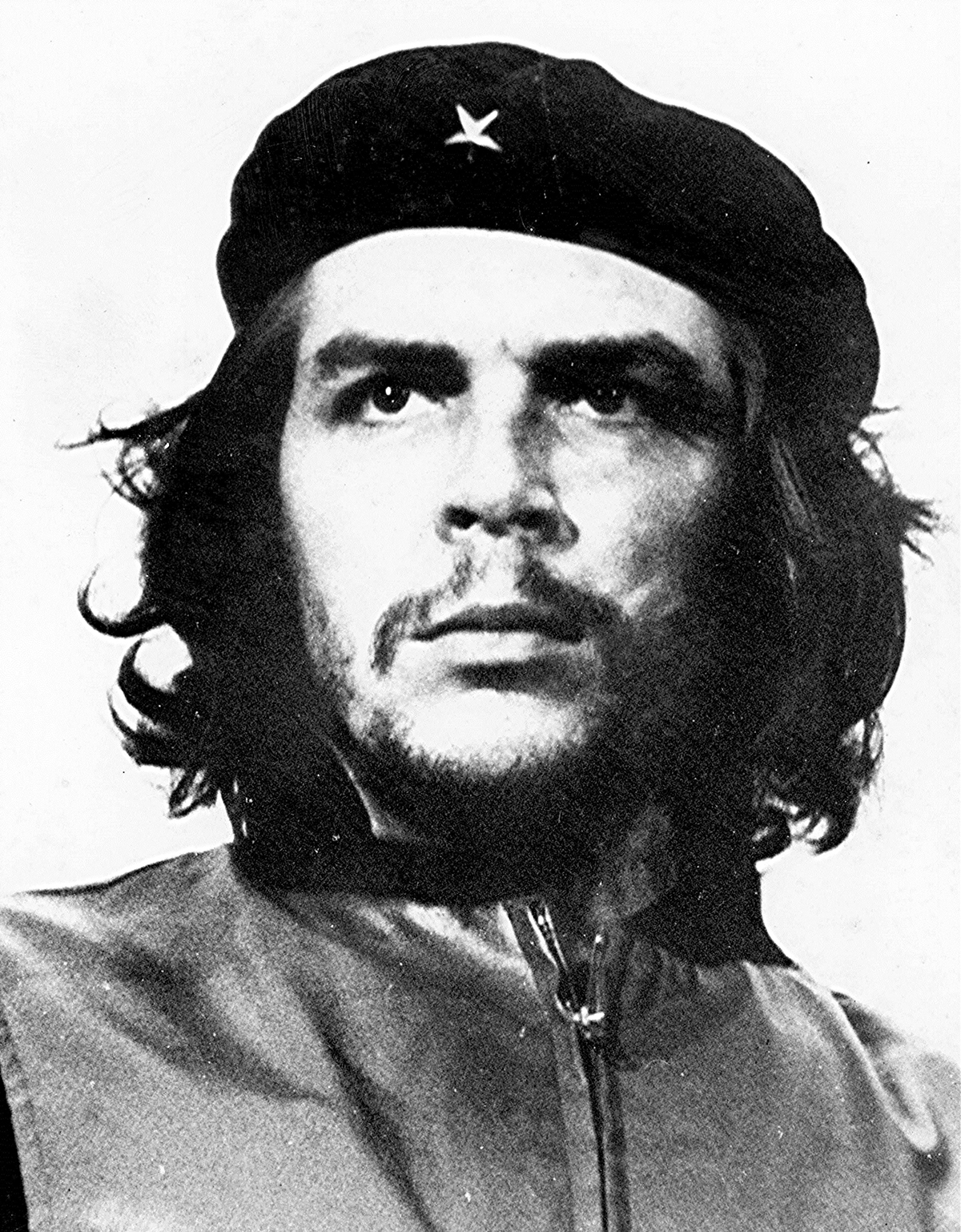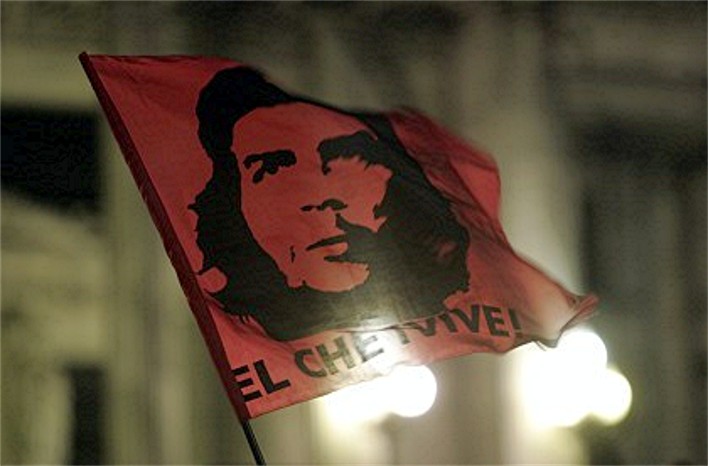
EspañolNicolás Márquez is a lawyer, journalist, political analyst, and native resident of the coastal city of Mar Del Plata, Argentina. Above all, Márquez is a writer.

Perhaps inspired by the fresh sea air that permeates the city, Márquez wrote El Canalla (The Scoundrel): The True Story of Che, where he brings to the surface the man beneath the myth, the Argentinean behind the Latin American, and the murderer underneath the façade of a righteous man.
Márquez speaks slowly and possesses the enviable vocabulary and oratory skills of man who has been immersed in endless debates across the political spectrum. His book has received both visceral reviews from critics and appreciation from those who view it as the unmasking of the real Che Guevara.
The third edition of the book was just released in early August, with presentations in Buenos Aires and Rosario.
Why does the myth of Che persist despite documented truths?
Progressives have strong emotions and weak ideas, and have no objection to sacrificing logic and documented truth before utopian dreams. For progressives, things are judged not by their results (proven to be disastrous), but by their objectives, supposedly noble, consisting of “saving the world’s poor.”
In the collective imagination, this is how Che is viewed. They don’t remember the man who shot and murdered [his opponents], but the man who supposedly serviced the “wretched of the earth.”
What surprised you the most when studying Che Guevara?
Ernesto Che Guevara: “I am not Christ or a philanthropist. I am the complete opposite of Christ. I fight for the things I believe in with all the weapons at my disposal and try to leave the other dead.”
What most surprised me, unlike the other books I’ve written, was how easy it was for me to destroy the myth.
Beyond the numerous biographies and references to other various sources, it is Che Guevara himself, in his memoirs, personal diaries, and complete works that recognize each and every one of his crimes.
In fact, he himself details each of the executions he personally carried out, and also makes note of the disdain he had for anyone who disagreed with his ideological delusions. In other words, to destroy the myth of Che, there is no better source than Che himself.
How would you describe Che Guevara in a few short words? And why do you call him a canalla (scoundrel)?
He was a man with an interesting general education, but little political education. He was reckless, cruel, selfish, defiant, and prone to making extreme and outrageous decisions.
He was also a man in grief, without inner peace, always willing to go to war that he himself had brought upon the world — a place that he believed was hostile and unbearable. This is why he had suicidal tendencies. But not a conventional suicide, [he wanted] an epic suicide — dramatic and romantic. He always dreamed of a death that would be “one of a kind,” and that’s how he died.
As far as “el canalla,” it is a play on words to grab the reader’s attention. Canalla is a word used in Argentinean soccer folklore to describe fans of Rosario Central. At the same time, however, to the Royal Spanish Adacamy, the word means “a vile and despicable man.” Che was a fan of this soccer club, and his personality also fits the definition.
What is the most famous myth surround this figure?

It is believed he was a Good Samaritan on a pilgrimage around the world, trying to save the forgotten, and was assassinated while on his quest. It a sort of Christ-like myth, since it conforms with the extreme self-sacrifice of the good preacher who is martyred to redeem the world.
The difference is that Christ — beyond the religious or theological connotations — killed no one, and preached tolerance and love among men. He promoted certain basic rules of coexistence and respect for private property (not to covet or steal the property of others), not to lie, kill, but love your neighbor.
Che literally preached “hatred as an element of struggle,” and the deaths on his head are counted by the dozen.
In July of 1956, he wrote: “I am not Christ or a philanthropist. I am the complete opposite of Christ. I fight for the things I believe in with all the weapons at my disposal and try to leave the other dead.” However, his uninformed disciples praise Che as if he were a kind of contemporary prophet.
Is there any sign that the myth may be fading, or is it growing stronger?
In the 1970s, the image of Che was still rather faithful to reality, as the uncompromising guerrilla fighter. This is who inspired the FARC in Colombia, the ERP in Argentina, the MIR in Chile, the Shining Path in Peru, and other guerrilla in the region.
Beginning in the 1980s, the myth began to form, and this supposed freedom fighter of steel became a marketing poster — a kind of corporate logo for mass consumption for progressives who live and enjoy the benefits of capitalism, but also feel guilty. They carry around Che’s image on their cell phone cases or as an ornament hanging from the rearview mirror of their cars.
I believe the myth is becoming increasingly stronger, and increasingly distant from the real Che Guevara.
What does it say about our Latin-American culture that there is so much fascination with an admitted murderer like Che?

It is not a problem only in Latin America but also in Europe, Asia, and Africa. Today, Che is a staple in popular movements, in various different forms and manifestations.
His image fits just as well within the Communist Party as it does on a soccer field; in a Rolling Stones concert, as well as it does in an environmentalist protest; in a labor demonstrations, or in a decorative frame in an elegant restaurant in any wealthy neighborhood of a Western capital.
Today, Che is a kind of fetish that emanates a certain likable rebelliousness, to which he adds his photogenic, attractive face. Most people who see it immediately associate him with various “just causes.”
Why are there so few Che fans who are willing to move to Cuba and live out his project?
Che created a concentration camp on the Guanahacabibes peninsula to punish homosexuals, and 99 percent of those who raise the equality flag don’t have the slightest idea.
Because it is a superficial fanaticism by useful idiots who display the banner of Che Guevara without any greater commitment than simply that.
They’re mere social networking Guevaristas who seek to express their dissatisfaction with a world that offers them a much higher quality of life than the world Che wanted or that has materialized in Cuba.
Ultimately, they are fans, and they know it. They only go to Cuba to tour socialism for a week and then they go back to their respective countries of origin and continue enjoying the internet and Coca-Cola.
21st-century Guevaristas are all talk, and that talk is worth as much as those decorative Che posters.
How is it that socialists who are in favor of same-sex marriage worship a racist and homophobe, based on the descriptions of Che in your book?
Because they are unaware and have not read about it. Che lives because he is dead, and what makes him stand out in today’s world are all the things that he is not. He is an anachronism that represents absolutely nothing that today’s uninformed socialists promote in the way of cultural reform.
Che created a concentration camp on the Guanahacabibes peninsula to punish homosexuals, and 99 percent of those who raise the equality flag don’t have the slightest idea about these Gueravista camps in Cuba.
They raise up a cardboard idol, and the few activists who may actually be willing to risk their lives do so not because of revolutionary focalism, but after snorting a line of cocaine — a bourgeois vice that an ascetic like Che would not have hesitated to punish with death.
 Versión Español
Versión Español












